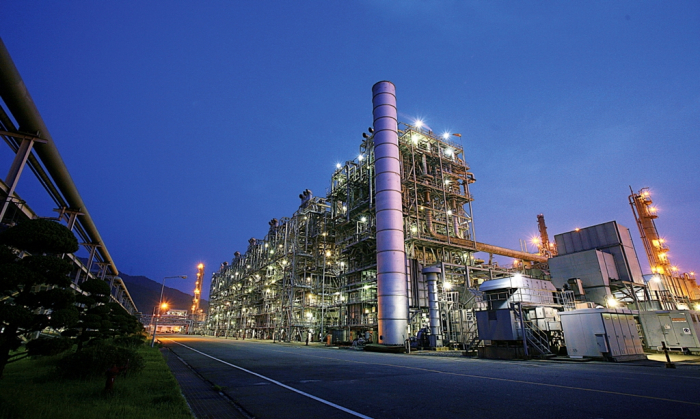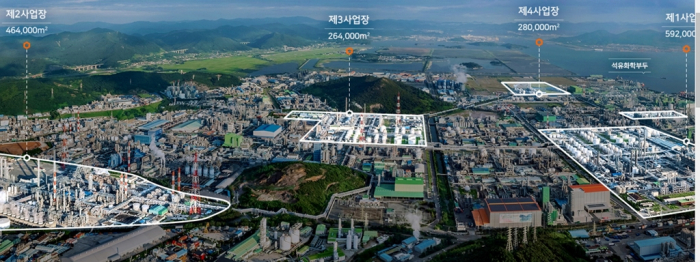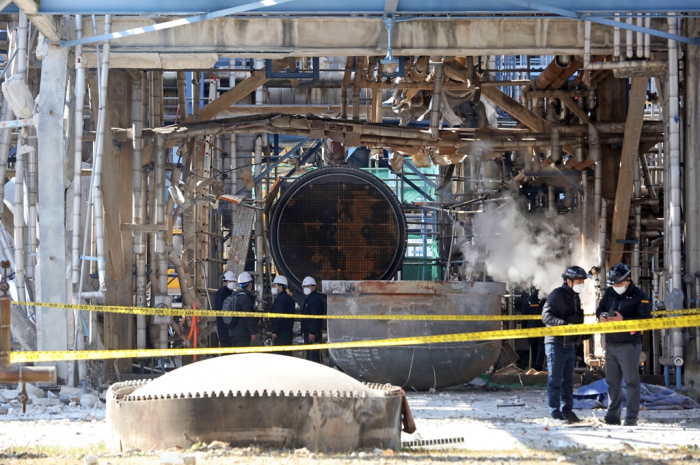Petrochemicals
Hanwha, DL Chemical to split up two-decade-old YNCC joint venture
A plant explosion and worsening profitability have prompted the partners to walk separate ways, analysts say
By Nov 27, 2022 (Gmt+09:00)
3
Min read
Most Read
LG Chem to sell water filter business to Glenwood PE for $692 million


Kyobo Life poised to buy Japan’s SBI Group-owned savings bank


KT&G eyes overseas M&A after rejecting activist fund's offer


StockX in merger talks with Naver’s online reseller Kream


Mirae Asset to be named Korea Post’s core real estate fund operator



Yeochun NCC Co., a leading South Korean petrochemical producer, will split up after its two owners – Hanwha Group and DL Group – have agreed to end their partnership on the joint venture after more than two decades.
The two business groups, Hanwha and DL, are in talks over how to split the naphtha cracking facilities, launched in 1999 as a 50:50 joint venture between Hanwha Solutions Corp. and DL Chemical Co., formerly known as Daelim Industrial Co.
“We’re considering various ways to promote Yeochun NCC’s continued growth over the long term,” said an official at one of the two companies.
Yeochun NCC, widely known as YNCC, runs four naphtha cracking plants at an industrial complex in Yeosu, a coastal city about 340 km southwest of Seoul. By cracking naphtha, a feedstock for various petrochemical products, the company produces basic raw materials such as ethylene, propylene and butadiene, and supplies them to Hanwha and DL.
Plants 1 to 3 with a combined capacity of 2.29 million tons of ethylene can produce petrochemical products such as benzene, toluene and xylene (BTX). The fourth plant can manufacture styrene monomer (SM) and methyl tertiary butyl ether (MTBE).
YNCC is headed by two co-chief executives, each from Hanwha Solutions and DL Chemical.

SPIN-OFF METHOD
Industry sources said Hanwha and DL will break up through the spin-off method, in which YNCC distributes shares of two new entities to its existing shareholders on a pro-rata basis.
Specifically, one of the two companies will likely take over plants 1 and 4 while the other will assume plants 2 and 3, the sources said. Alternatively, one side could acquire plants 1, 3 and 4 while the other takes over plant 2 plus cash in compensation, they said.
The partners have maintained an uncomfortable relationship for years and in 2007 burst into a rage over management rights, including executive reshuffles, industry watchers said.
The last straw that broke the camel’s back, industry officials said, was differences between the partners over an explosion at a YNCC factory in February.
The blast that hit the No. 3 plant with an annual ethylene capacity of 470,000 tons killed four people and injured another four. YNCC said the explosion took place during a test of the factory’s heat exchange system.
Following the incident, Hanwha and DL concluded that it would be safer and more efficient for them to split up and control the plants separately, sources said.

FROM GOLDEN EGG LAYING GOOSE TO UGLY DUCKLING
YNCC’s profitability has also worsened, affecting the partners’ decision to break up, they said.
The petrochemical company, which recorded 262.4 billion won ($196 million) in operating loss in the first nine months of the year, is expected to post its worst-ever losses for the entire year.
Korea’s petrochemical companies have been reducing ethylene production as a global economic slowdown dampens demand, hurting their profitability.
Naphtha-fed steam cracker operators, including Lotte Chemical Corp., LG Chem Ltd., Korea Petrochemical Co. and YNCC, cut operating rates of their ethylene plants to the low-80% level in August.
YNCC had been a golden egg-laying goose until 2021. The company posted 556.7 billion won in operating profit on revenue of 5.34 trillion won annually, on average, between 2017 and 2021.
Encouraged by the decent profits, YNCC paid out a total of 2.07 trillion won in dividends to Hanwha and DL over the five-year period.
Write to Ik-Hwan Kim and Kyung-Min Kang at lovepen@hankyung.com
In-Soo Nam edited this article.
More to Read
-
 ConstructionSouth Korea's DL E&C wins 1st petrochemical plant order in US
ConstructionSouth Korea's DL E&C wins 1st petrochemical plant order in USNov 17, 2022 (Gmt+09:00)
1 Min read -
 EnergyOil prices to remain high, petrochem a concern: GS Caltex CEO
EnergyOil prices to remain high, petrochem a concern: GS Caltex CEOOct 17, 2022 (Gmt+09:00)
3 Min read -
 PetrochemicalsKorean petchem producers cut output on weaker margins
PetrochemicalsKorean petchem producers cut output on weaker marginsAug 24, 2022 (Gmt+09:00)
1 Min read -
 PetrochemicalsKorea’s YNCC shuts petrochem plant after explosion kills four
PetrochemicalsKorea’s YNCC shuts petrochem plant after explosion kills fourFeb 11, 2022 (Gmt+09:00)
2 Min read
Comment 0
LOG IN


